Do you have a question about the YASKAWA Varispeed CIMR-G7A and is the answer not in the manual?
Provides an overview of the Varispeed G7 series, including its voltage classes and models.
Details the different models available in the Varispeed G7 series, including specifications.
Outlines the checks to be performed immediately after the Inverter is delivered to ensure correct receipt.
Explains the information provided on the Inverter's nameplate, such as model number and specifications.
Identifies and illustrates the external appearance and components of the Inverters, differentiating by kW rating.
Provides exterior diagrams and dimensions for Open Chassis and Enclosed Wall-mounted Inverters.
Details the environmental conditions and precautions for selecting an appropriate installation site.
Specifies the required installation space around the Inverter for proper heat dissipation and cooling.
Provides step-by-step instructions for removing and attaching the terminal cover to access wiring terminals.
Explains the procedures for safely removing and attaching the Digital Operator and front cover.
Details the process for removing and attaching the top and bottom protection covers on Inverters of 18.5 kW or less.
Illustrates example connections between the Inverter and typical peripheral devices.
Presents a detailed wiring diagram showing connections for the Inverter, including main and control circuits.
Shows the arrangement of terminal blocks for 200 V Class Inverters, distinguishing main and control circuits.
Provides guidance on selecting appropriate wires, crimp terminals, and tightening torque for main circuit connections.
Details wire sizes, closed-loop connectors, and precautions for wiring control circuit terminals.
Lists essential checks to perform after wiring is completed to ensure correctness and safety.
Explains how to install and wire various option boards, including PG speed control and reference boards.
Introduces the Digital Operator, its component names, functions, and key operations.
Overviews the five operating modes of the Inverter and their primary functions.
Provides a flowchart for performing trial operation, covering basic settings and autotuning methods.
Details the step-by-step procedures for trial operation, including power ON and display checks.
Offers guidance on adjusting user constants to resolve issues like hunting or vibration.
Explains the structure and elements of user constant tables, detailing names, descriptions, and control methods.
Shows the hierarchy of the Digital Operator display, listing functions, displays, and corresponding pages.
Lists user constants that can be monitored and set in quick programming mode for basic operation.
Explains how to select the frequency reference source, including digital operator and analog inputs.
Details methods for selecting the source of the Run Command, such as Digital Operator or control circuit terminals.
Describes various methods for stopping the Inverter, including deceleration, coasting, and DC braking.
Explains how to set acceleration and deceleration times, including S-curve characteristics.
Guides on adjusting analog and pulse train frequency references, including gain and bias settings.
Explains how to limit the maximum and minimum output frequencies to control motor speed.
Details functions for improving motor operating efficiency, such as slip compensation and torque compensation.
Covers functions for protecting the machine, including noise reduction and motor overload protection.
Explains functions for continuing operation or restarting the Inverter automatically after an error.
Details functions for protecting the Inverter itself and connected braking resistors from overheating.
Explains how to set operating methods by switching functions for multi-function contact input terminals.
Describes functions for setting output methods by switching functions for multi-function output terminals.
Explains how to set analog monitor and pulse monitor constants for monitoring Inverter status.
Details individual functions used in special applications, such as MEMOBUS communications and PID control.
Covers functions related to the Digital Operator, including display settings, multi-function selections, and copy functions.
Lists and explains various option boards available for the Inverter, such as PG speed control and communications boards.
Provides precautions and considerations for using the Inverter in elevating machine applications like elevators and cranes.
Describes alarm functions, including fault detection, alarm detection, and operation error detection.
Provides guidance on identifying and correcting problems when the Inverter and motor do not operate as expected.
Outlines daily inspections, periodic inspections, and part replacement guidelines for the Inverter.
Lists the standard technical specifications of the Inverter, including electrical and environmental data.
Details the specifications for available options and peripheral devices that can be connected to the Inverter.
Explains the different control methods supported by the Varispeed G7 series, including their features.
Provides essential precautions for selecting, installing, setting, and handling Inverters in various applications.
Offers precautions for applying the Inverter to different types of motors, including special motors.
Illustrates wiring examples for connecting peripheral devices, transformers, and option boards to the Inverter.
Lists and describes all user constants that can be set in the Inverter for configuration and customization.
Provides an overview of the Varispeed G7 series, including its voltage classes and models.
Details the different models available in the Varispeed G7 series, including specifications.
Outlines the checks to be performed immediately after the Inverter is delivered to ensure correct receipt.
Explains the information provided on the Inverter's nameplate, such as model number and specifications.
Identifies and illustrates the external appearance and components of the Inverters, differentiating by kW rating.
Provides exterior diagrams and dimensions for Open Chassis and Enclosed Wall-mounted Inverters.
Details the environmental conditions and precautions for selecting an appropriate installation site.
Specifies the required installation space around the Inverter for proper heat dissipation and cooling.
Provides step-by-step instructions for removing and attaching the terminal cover to access wiring terminals.
Explains the procedures for safely removing and attaching the Digital Operator and front cover.
Details the process for removing and attaching the top and bottom protection covers on Inverters of 18.5 kW or less.
Illustrates example connections between the Inverter and typical peripheral devices.
Presents a detailed wiring diagram showing connections for the Inverter, including main and control circuits.
Shows the arrangement of terminal blocks for 200 V Class Inverters, distinguishing main and control circuits.
Provides guidance on selecting appropriate wires, crimp terminals, and tightening torque for main circuit connections.
Details wire sizes, closed-loop connectors, and precautions for wiring control circuit terminals.
Lists essential checks to perform after wiring is completed to ensure correctness and safety.
Explains how to install and wire various option boards, including PG speed control and reference boards.
Introduces the Digital Operator, its component names, functions, and key operations.
Overviews the five operating modes of the Inverter and their primary functions.
Provides a flowchart for performing trial operation, covering basic settings and autotuning methods.
Details the step-by-step procedures for trial operation, including power ON and display checks.
Offers guidance on adjusting user constants to resolve issues like hunting or vibration.
Explains the structure and elements of user constant tables, detailing names, descriptions, and control methods.
Shows the hierarchy of the Digital Operator display, listing functions, displays, and corresponding pages.
Lists user constants that can be monitored and set in quick programming mode for basic operation.
Explains how to select the frequency reference source, including digital operator and analog inputs.
Details methods for selecting the source of the Run Command, such as Digital Operator or control circuit terminals.
Describes various methods for stopping the Inverter, including deceleration, coasting, and DC braking.
Explains how to set acceleration and deceleration times, including S-curve characteristics.
Guides on adjusting analog and pulse train frequency references, including gain and bias settings.
Explains how to limit the maximum and minimum output frequencies to control motor speed.
Details functions for improving motor operating efficiency, such as slip compensation and torque compensation.
Covers functions for protecting the machine, including noise reduction and motor overload protection.
Explains functions for continuing operation or restarting the Inverter automatically after an error.
Details functions for protecting the Inverter itself and connected braking resistors from overheating.
Explains how to set operating methods by switching functions for multi-function contact input terminals.
Describes functions for setting output methods by switching functions for multi-function output terminals.
Explains how to set analog monitor and pulse monitor constants for monitoring Inverter status.
Details individual functions used in special applications, such as MEMOBUS communications and PID control.
Covers functions related to the Digital Operator, including display settings, multi-function selections, and copy functions.
Lists and explains various option boards available for the Inverter, such as PG speed control and communications boards.
Provides precautions and considerations for using the Inverter in elevating machine applications like elevators and cranes.
Describes alarm functions, including fault detection, alarm detection, and operation error detection.
Provides guidance on identifying and correcting problems when the Inverter and motor do not operate as expected.
Outlines daily inspections, periodic inspections, and part replacement guidelines for the Inverter.
Lists the standard technical specifications of the Inverter, including electrical and environmental data.
Details the specifications for available options and peripheral devices that can be connected to the Inverter.
Explains the different control methods supported by the Varispeed G7 series, including their features.
Provides essential precautions for selecting, installing, setting, and handling Inverters in various applications.
Offers precautions for applying the Inverter to different types of motors, including special motors.
Illustrates wiring examples for connecting peripheral devices, transformers, and option boards to the Inverter.
Lists and describes all user constants that can be set in the Inverter for configuration and customization.

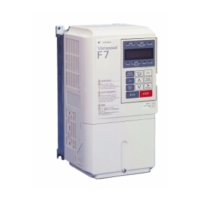
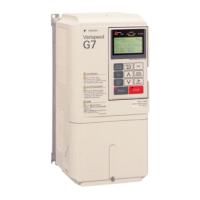
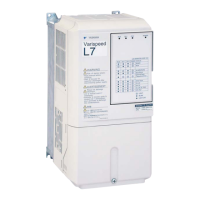
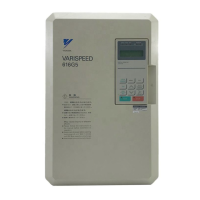
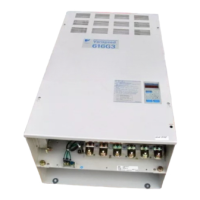
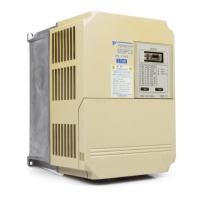
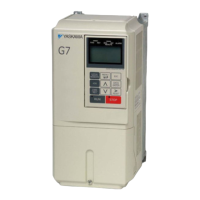
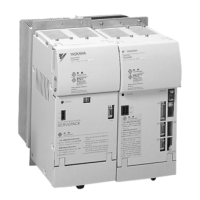
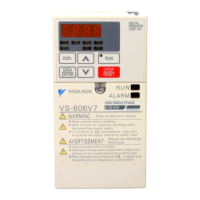
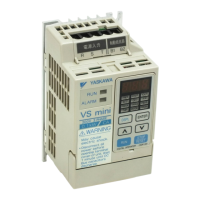
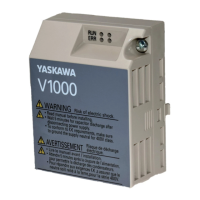
